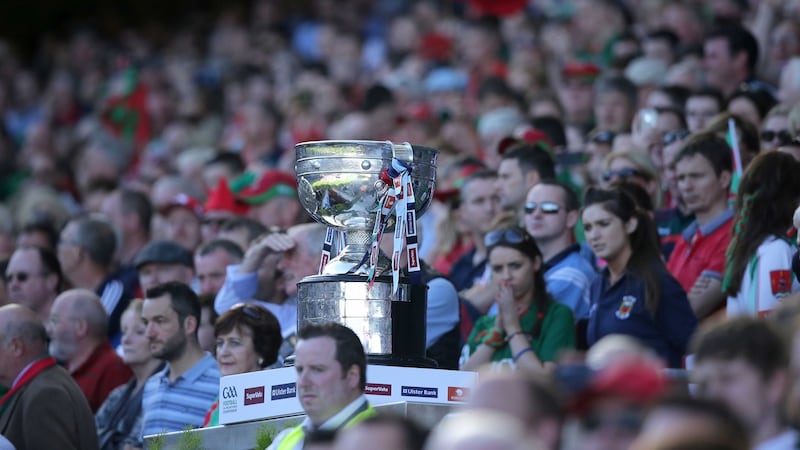In the early hours of March 23rd, 1921, the RIC and the Black and Tans surrounded a barn in Cornelius O'Keefe's farm at Ballycannon, near Clogheen, just beyond the northside of Cork city. Six members of C Company, Cork No 1 Brigade were sleeping inside.
In one version of what happened next, the police invited the men to run for their lives, shooting them as they did. In others, there was a gunfight and hand-to-hand combat. In every account, the sextet was killed, their deaths the result of a tip-off from Patrick “Cruxy” O’Connor, an IRA man turned informer. A friend and neighbour. He gave up his former colleagues on Spy Wednesday.
The nickname came from supposedly winning the Croix de Guerre when serving in the British Army in the Great War, and suspicions about his wavering loyalties had been around since he claimed a Lewis machine gun in his care had crucially jammed during the Coolavokig ambush earlier in the year. Although O'Connor was immediately placed in protective custody at Victoria Barracks, several attempts were made on his life. A Cumann na mBan member dressed up as his mother and tried to visit him with poisoned food. An elaborate plan to hijack the Dublin train was aborted when it emerged he'd already been spirited away to England on a British destroyer.
There, the trail was picked up by Sam Maguire, GAA stalwart, one of Michael Collins' most trusted consiglieres in London, and a pivotal figure in the republican movement in the capital. His job in the postal service made him ideally suited for trafficking information, fugitives, guns and ammo, and, if the need arose, planning and organising assassinations too. When Daniel Healy and Liam Callaghan were sent across to find and shoot O'Connor in July 1921, Maguire discovered their target was due at Hammersmith post office to pick up a package from home. After a fruitless 10-day stakeout, however, he'd slipped the net again and escaped to America.
Dave Hannigan: What would the ghost of Christy Ring make of modern hurling?
Celtic Park – where the New York Irish once sported and played ... drank and fought
Dave Hannigan: How Christy Ring aroused the curiosity of American media
America at Large: Crane a passionate early advocate for hurling in the USA

In New York, O'Connor, quickly joined by the rest of his family, got a job as a bookkeeper at Altman's, a luxury department store on Fifth Avenue, and began a new life. The ad hoc witness protection programme failed to factor in the gravitational pull that inexplicably draws Corkonians together wherever they are, whatever the circumstances. A mysterious character known only as Miss Conway recognised the newcomer and wrote home to her friend Teddy Courtney with the relevant information. Healy, this time accompanied by Pa Murray and Martin Donovan, was soon heading back to London, the first stop on the trio's clandestine journey across the Atlantic Ocean.
Upon arriving in Manhattan in February, 1922, they began surveillance of their target, possibly getting too close because O'Connor quickly abandoned his digs and never turned up at Altman's again. Scouring the city for fresh leads, they eventually spotted him at the St Patrick's Day Parade, or found his new accommodation by tracking his brother. In this story, like so many others from that troubled time, there are always competing narratives. Either way, they had him in their sights by the evening of April 13th. Holy Thursday.
Revolvers were supplied by James McGee, a native of Dundalk, and an organiser with the Maritime Labour Union. Warm temperatures meant the three Corkmen, accompanied by another shooter from Derry named Mullins, couldn't carry any bigger hardware under their coats as they watched his apartment on 83rd Street. When O'Connor left the building, they tracked him towards Central Park West, a cigarette in his mouth as he walked along, relaxed, until he recognised Murray and Donovan walking towards him. Then, he ran for it, right into the path of a man in a fedora.
“I was shaded by a tree, consequently, he was on me before he was aware of my presence,” said Healy in testimony to the Bureau of Military History. “I fired at him, hitting him (as I thought) in the chest. He immediately ran right across the street. I followed him up and fired on him again, hitting him twice. To my surprise, he again doubled back across the road towards Central Park West, ran around a tram which had pulled up there and back again in the direction of 84th Street. I was behind him the whole time. After rounding the tram, I fired at him again, but I knew this shot missed as I heard the thud of a bullet on a building nearby.”
O’Connor eventually fell to the pavement where Healy shot him twice more before fleeing for the subway. When onlookers started to pursue him, Donovan pulled out his gun and waved them back. The next morning’s New York papers said the victim was near death in Reconstruction Hospital, contained eyewitness accounts of how the extremely calm gunman “seemed oblivious to the possibility of arrest”, and speculated about a motive. Within days, the press had chapter and verse on Ballycannon and labelled O’Connor a traitor even while reporting that every time NYPD tried to question him, he simply shook his head.
Somehow, he survived, living out the rest of his life between America and Canada. Healy, Donovan and Murray were safely smuggled out of New York, and all received state pensions in the decades after. Sam Maguire was eventually fired from the Post Office, moved back to his native West Cork, and contracted TB. After his death in penury in 1927, they named a trophy after him.















